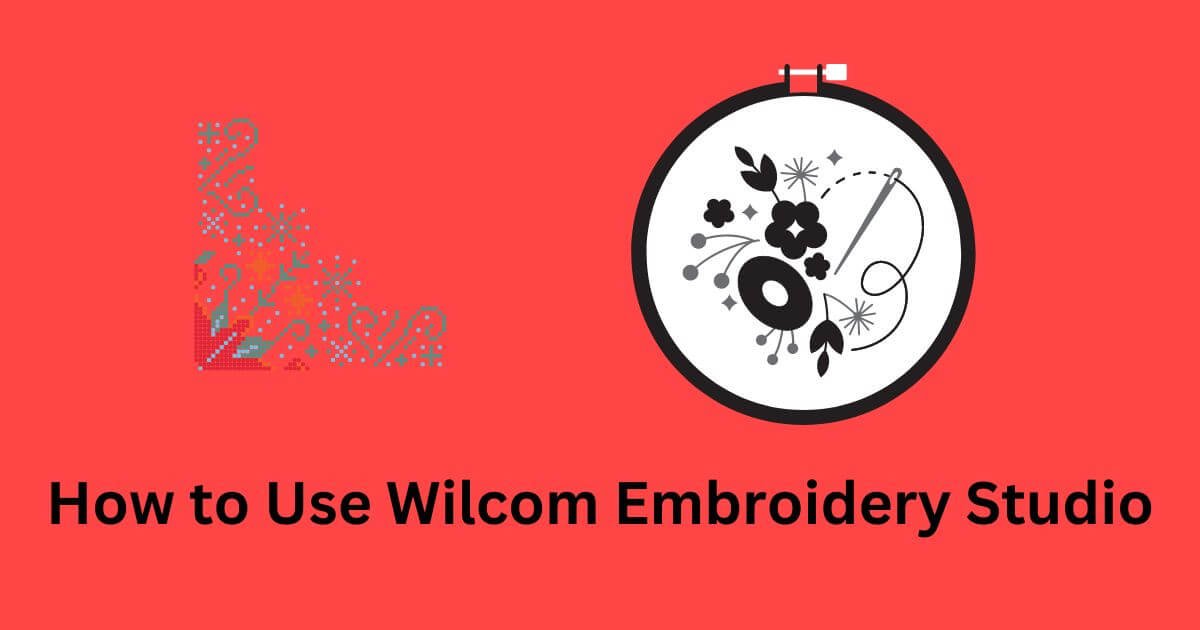Wilcom Embroidery Studio is a powerful tool for creating and editing embroidery designs. Whether you’re a beginner or an experienced user, this guide will help you get started with the basics of using Wilcom Embroidery Studio.
How to Use Wilcom Embroidery Studio
1. Installation and Setup
- Install the Software:
- Download Wilcom Embroidery Studio from the official Wilcom website and follow the installation instructions.
- Activate your license or start with a trial version if available.
- Launching the Program:
- After installation, open Wilcom Embroidery Studio from your desktop or start menu.
2. Understanding the Interface
- Main Workspace: This is where you’ll create and edit your embroidery designs. It’s the central area where your design is displayed.
- Toolbars:
- Top Toolbar: Contains tools for file management, design creation, and basic editing (e.g., new, save, open, copy, paste).
- Side Toolbar: Contains tools for specific embroidery tasks such as digitizing, lettering, and shaping.
- Design Library: Use this section to manage and access your designs.
- Properties Panel: Displays options for the currently selected tool or object. Here, you can adjust stitch types, colors, and other properties.
3. Starting a New Design
- Create a New Design:
- Go to File > New to create a new design or File > Open to work on an existing one.
- Set the Hoop Size:
- Select the appropriate hoop size for your embroidery machine. You can do this by clicking on the Hoop icon in the top toolbar.
4. Inserting Artwork
- Import an Image:
- To digitize an image, go to Insert > Insert Artwork and select the image file (e.g., .jpg, .png) from your computer.
- The image will be placed in the workspace, ready for digitizing.
5. Basic Digitizing
- Auto-Digitizing:
- For quick results, use the Auto-Digitize feature by selecting Auto-Digitize Instant Embroidery from the top toolbar. This will automatically convert the image into embroidery stitches.
- Manual Digitizing:
- For more control, you can manually digitize using the Input A tool for shapes or the Input C tool for complex designs. Draw the shapes directly on the image or freehand in the workspace.
- Stitch Types:
- Choose from different stitch types like satin, fill, or run stitches from the properties panel after selecting your digitized shape.
6. Adding Text
- Lettering Tool:
- Click on the Lettering tool in the side toolbar to add text to your design. You can choose from a variety of fonts and styles.
- Adjust Text Properties:
- Use the properties panel to change font size, style, and spacing. You can also curve or rotate the text as needed.
7. Editing the Design
- Select and Modify Objects:
- Use the Select tool to click on objects in your design. You can move, resize, rotate, and modify them using the tools in the top toolbar or the properties panel.
- Grouping and Ungrouping:
- Select multiple objects and use the Group tool to combine them into a single object for easier manipulation. Use Ungroup to separate them.
8. Color Management
- Change Thread Colors:
- Select an object and change its color by choosing a thread color from the color palette at the bottom of the screen.
- You can also customize your own thread palette to match your specific needs.
9. Using the Stitch Simulator
- Preview Your Design:
- The Stitch Simulator allows you to preview the stitching process. This helps you visualize how your design will be embroidered before sending it to the machine.
- Adjust Stitch Order and Path:
- You can manually adjust the stitch sequence to optimize the embroidery process, ensuring that the design is stitched in the most efficient order.
10. Saving and Exporting
- Save Your Design:
- Save your design in Wilcom’s native .EMB format to keep it editable for future adjustments.
- Export for Embroidery Machine:
- When you’re ready to stitch the design, go to File > Export Machine File and choose the format that is compatible with your embroidery machine (e.g., .DST, .PES, .EXP).
11. Tips for Using Wilcom Embroidery Studio
- Practice Makes Perfect: Start with simple designs and gradually work your way up to more complex projects.
- Use Built-in Help: Wilcom Embroidery Studio offers a built-in help section and video tutorials to guide you through specific features.
- Explore Templates: Use built-in templates and design libraries to speed up the design process.
- Stay Organized: Keep your design files and projects well-organized in folders to make it easier to find and edit them later.
By following these steps, you’ll be able to create, edit, and optimize embroidery designs using Wilcom Embroidery Studio. As you gain experience, you can explore more advanced features and techniques to enhance your embroidery projects.
